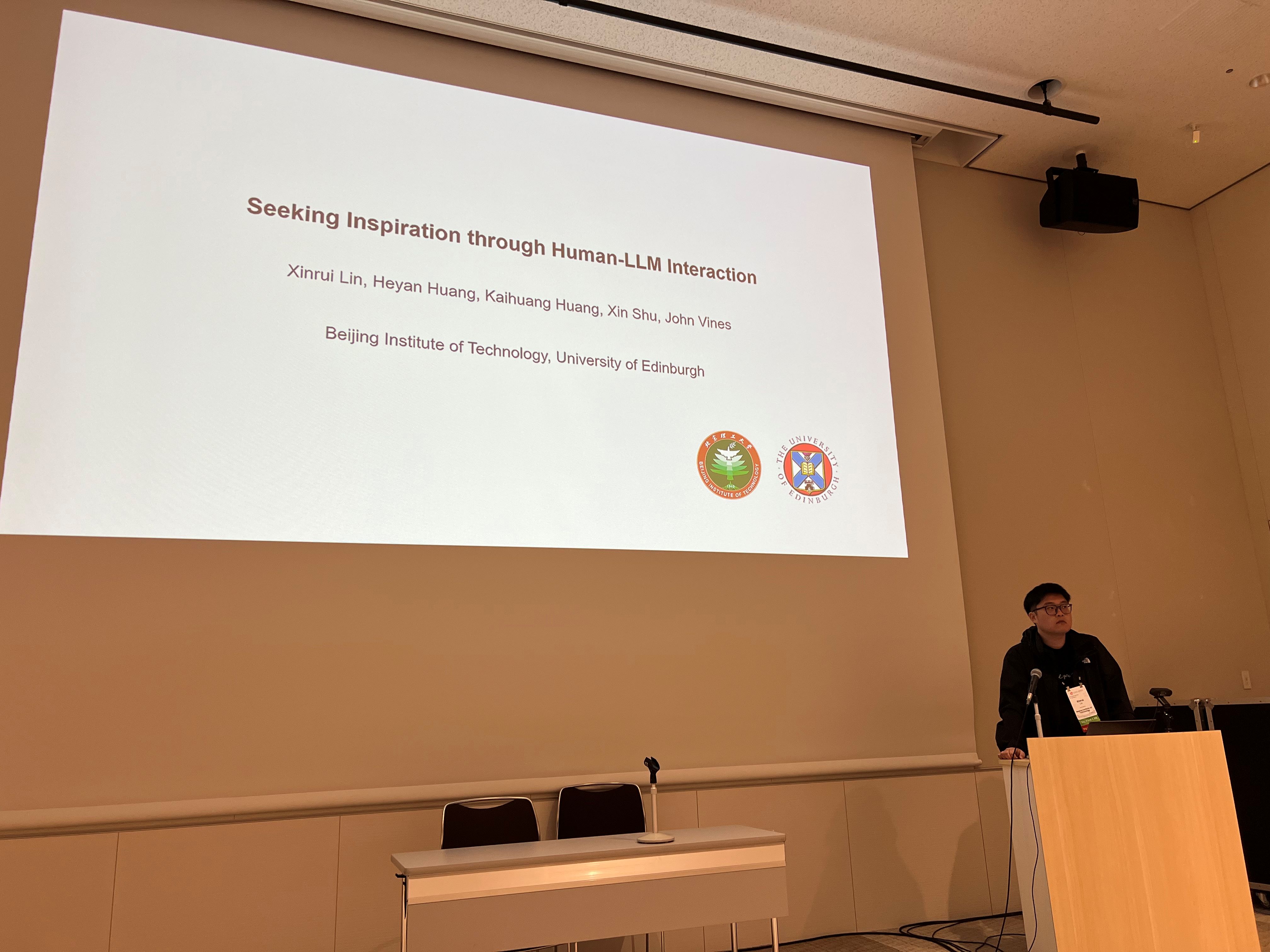26
2025

A Beyond Boundary & Inspiring Journey at CHI 2025 by Xinrui Lin

This year, I am honored to have my paper “Seeking Inspiration through Human-LLM Interaction” accepted at CHI 2025, the premier conference in human-computer interaction (HCI). From April 25th to May 2nd, I attended the conference in Yokohama, Japan. As a flagship venue for HCI innovation, CHI aims to address global challenges—climate change, inequality, technological disruption, conflict, and health crises—through interdisciplinary breakthroughs. This year’s theme, “Beyond Boundary,” resonated deeply, reflecting HCI’s expansive nature as a discipline shaped by cross-domain collisions and its embrace of transdisciplinary research. Unsurprisingly, LLMs and AI agents remained focal topics, dominating discussions across sessions.
As a researcher in this field, I had the opportunity to engage with numerous fascinating and inspiring works at the conference. These included innovations in educational technology, such as students learning through teaching LLM-based teachable agents; explorations into how AI might understand emotions—particularly efforts to make LLMs more empathetic toward users; and tools like the Conversation Progress Guide, designed to enhance user willingness to engage in dialogues with AI. Beyond my core focus, I also explored research from other domains: HCI approaches for high-risk scenarios and novel interaction methods using gestures, voice, and eye-tracking.
One particularly captivating part of the conference was the interactive technology exhibition, which showcased mind-blowing innovations. I witnessed a robotic arm painting with erratic yet deliberate movements; card tricks controlled by ultrasonic waves; and even researchers singing their papers! I also tried some interactive demos, such as an LLM-based conversational game where players had to coax a king (LLM) into saying specific phrases. These experiences underscored HCI’s boundless creativity—a community where rigor harmonizes with wild imagination.
On May 1st, I presented my work in the Co-ideation session, which focused on human-AI collaboration for ideation and innovation. Despite being the final day of the conference, the room was full. As the first speaker, I was nervous—this was my first time presenting at such a major academic venue—but I’m happy to say it went smoothly! Other standout papers in the session included IdeationWeb, which integrated mind map-like visualizations to support collaborative brainstorming, and a system that transformed user comments into interactive personas to help creators gain insights. These works further convinced me that human-AI collaboration and alignment will remain central themes in HCI for years to come—a direction I plan to pursue in my PhD.
Summarizing my CHI experience is no simple task, but ultimately, it was a journey “beyond boundaries.” The collision, fusion, and transcendence of different disciplines showcased HCI’s limitless possibilities while also highlighting the ethical, environmental, and societal challenges that come with pushing boundaries. In an era of rapid AI advancement, the conference served as a reminder of the importance of responsible technology design, robust governance frameworks, and ensuring that technological progress aligns harmoniously with human values. This experience has not only broadened my perspective but also deepened my commitment to contributing meaningfully to this dynamic field.

